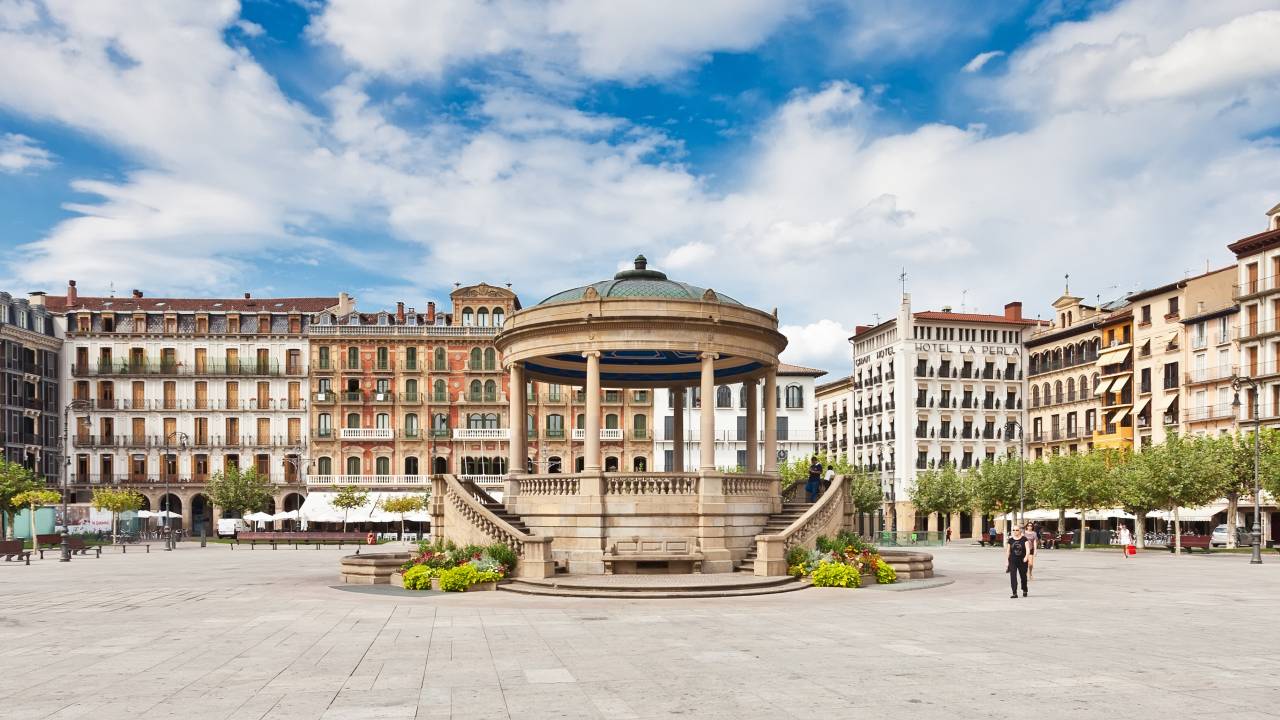Camino Francés
The Camino Francés (the French Way, known to many as simply El Camino de Santiago) follows a route from Saint-Jean-Pied-de-Port to Santiago de Compostela, through the Pyrenees, Navarra, La Rioja, Castilla y León and Galicia.
The most popular starting points are Sarria, Saint-Jean-Pied-de-Port, León, O Cebreiro and Ponferrada, but as with any Camino, you can start wherever you want (just make sure you walk at least the last 100 kilometres if you want to obtain a compostela).
Places of interest along the Camino Francés

Pamplona/Iruña
Pamplona (Iruña or Iruñea in Basque) was the capital of the former Kingdoms of Pamplona and later Navarre, and is the capital of the autonomous community of Navarre today. Among other things, it is well known for the annual festival of San Fermín (the Sanfermines) held every year between the 6th and the 14th of July, which includes (but is not limited to) the famous running of the bulls.

Burgos
Burgos was founded in 884. It became known as Cabeza de Castilla ('Head of Castile'), reflecting that both the County (and later Kingdom) of Castile and Castilian Spanish started evolving in this region. The legendary El Cid was born in the nearby village of Vivar (now Vivar del Cid).

León
Founded by the Romans, León went on to become the capital of the Kingdom of León, which played a major role in the Spanish Reconquista, and at its peak ruled over Galicia and what is now northern Portugal. Today it is the capital of the Province of León.

Astorga
Founded by the Romans as Asturica Augusta (after the local Celtic people, the Astures). Its Roman walls, from the turn of the 3rd and 4th centuries, still encircle parts of the old town.

Ponferrada
The town gets its name from the Latin pons ferrata, meaning 'iron bridge'. The bridge was built in the 11th century to help pilgrims get to Santiago de Compostela, and still stands today.

Sarria
Being just over 100 kilometres away from Santiago de Compostela makes Sarria the most popular starting place for all of the various Caminos de Santiago. About one-third of all pilgrims bound for Santiago de Compostela start from Sarria.

Santiago de Compostela
Santiago de Compostela is the capital of Galicia, and the final destination for hundreds of thousands of pilgrims every year walking one of the various caminos. Legend has it that the remains of the apostle St. James (Santiago, the patron saint of Spain) were brought here and are now preserved in the Cathedral.
